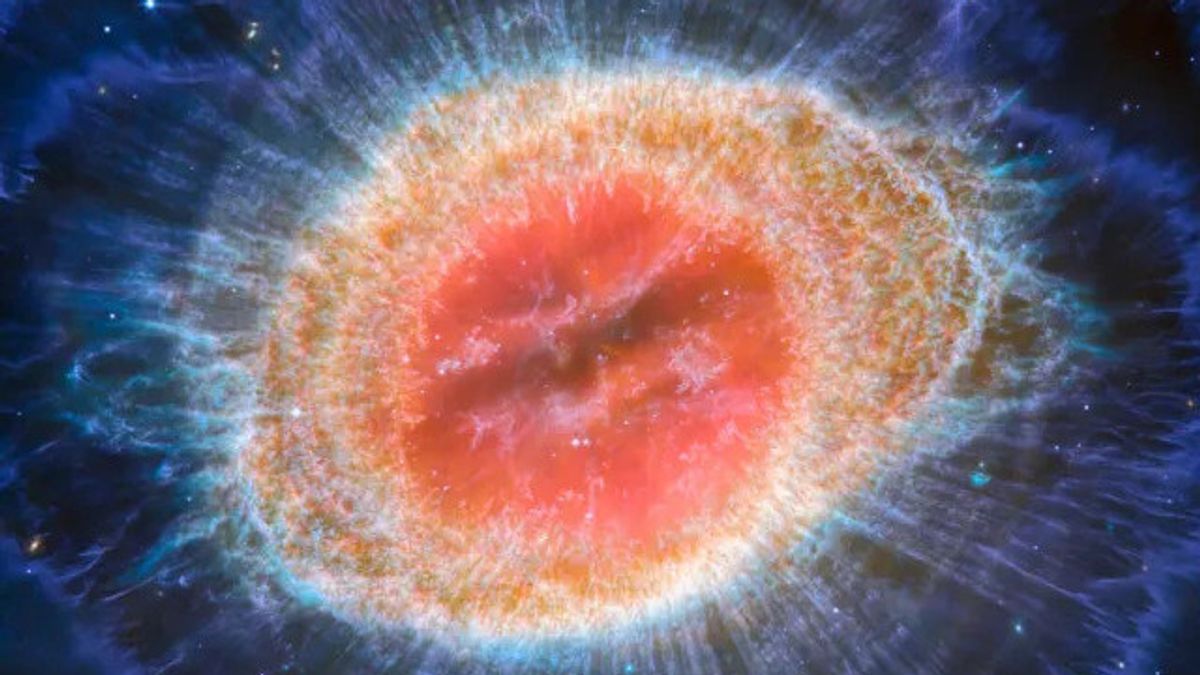JAKARTA - NASA's James Webb Space Telescope and its international partners have observed the Ring Nebula which is known for its unprecedented details.
Formed by stars that release their outer layers due to running out of fuel, the Ring Nebula is the basic pattern of planetary nebulae.
The objects are also known as M57 and NGC 6720, and are located relatively close to Earth, about 2,500 light-years away.
However, recent images provide unprecedented spatial resolution and spectral sensitivity, as well as uncovering unique details in both infrared observations.
Images captured by the Near-InfraRed Camera (NIRCam) show complicated details of the filamentary structure of the inner ring, while new images from the Mid-InfraRed Instrument (MIRI) reveal special details in concentric features in the outer regions of the nebular ring.
There are about 20,000 dense grains in the nebula, which are rich in hydrogen molecules. On the other hand, the interior shows very hot gas.
VOIR éGALEMENT:
"The main shell contains a thin ring of emission enhancement from carbon-based molecules known as polycyclic aromatic hydrocarbons (PAHs). Approximately ten concentric arcs are located just outside the outer edge of the main ring," NASA said, quoted Tuesday, August 22.
The arc is thought to stem from the interaction of the central star with a low-mass companion orbiting at a distance comparable to the distance between Earth and Planet Pluto.
In this way, nebulae such as the Ring Nebula reveal a kind of astronomical archaeological, as astronomers observe the nebula to study the star that created it.
"The nebula is shaped like a distorted donut. We looked directly down at one of the pillars of this structure, with a bright material barrel that stretches far from us," NASA said.
"Although the middle part of these donuts may look empty, actually these donuts are full of lower-density materials that stretch towards us and stay away from us, creating a shape similar to the rugby ball that is inserted into the middle gap of the donuts," he added.
The colorful main ring consists of gases dumped by dying stars in the center of the nebula. This star is in the process of becoming a white dwarf, which is a very small, dense and hot object that is the last stage of evolution for a star like the Sun.
The Ring Nebula is one of the most famous objects in the sky, discovered in 1779 by astronomer Antoine Darquier de Pellepoix and Charles Messier, and added to the Messier Catalog.
The two astronomers discovered the nebula when trying to follow the comet's path through the constellation Lyra, passing very close to the Ring Nebula. These observations were completed as part of the Webb GO 1558 Telescope observation program.
The English, Chinese, Japanese, Arabic, and French versions are automatically generated by the AI. So there may still be inaccuracies in translating, please always see Indonesian as our main language. (system supported by DigitalSiber.id)













